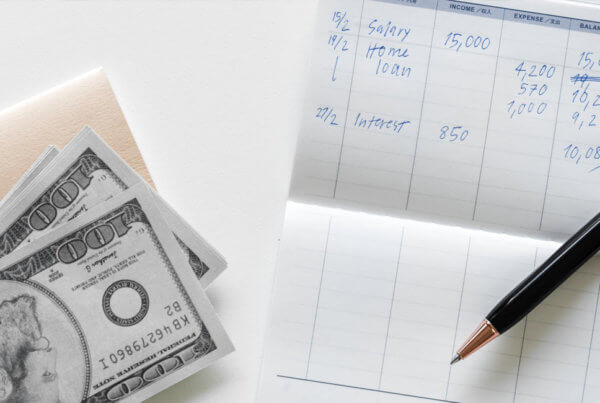Your minimum payment is meant to keep you in debt.
A minimum payment is generally calculated as 2-3% of your balance, or 1% of your balance plus interest and fees. This minimum payment is specifically calculated to maximize the amount of interest you pay, and the length of your repayment. Keep in mind, the interest you pay is profit for the credit card companies.
To put this into perspective, a consumer paying $10,000 in credit card debt at the national average industry rate of 19.24%, would end up paying roughly $19,500 for that debt when all is said and done.
Surprisingly, this information is shown right on your statement, just very small and quite difficult to understand. The CARD Act requires statements to now show how long it will take you to get out of a given debt if making just the minimum payment, and it’s shocking.
For high balances, it will take decades to repay the debt. And, you will have paid nearly double for the credit spent. All of this because debt is a business. For creditors and collectors, the longer you stay in high interest debt, the more they make.
You have debt collection rights
Very few people know about the Fair Debt Collection Practices Act of 1977 awarded significant rights to consumers against creditor and collector harassment. For instance, did you know that if you ask a creditor to stop contacting you, they must comply?
If they don’t, they can be fined for every phone call, and it can even result in compensation for the debtor.
Of course, telling your creditor not to contact you by no means the debt is forgiven or forgotten, you still owe it. A collector can still pursue legal action to collect this debt. They simply can’t contact you regarding it. This is a good tactic for aggressive collectors that harass consumers into making a payment.
Whatever you do, avoid late payments.
Late charges on credit cards can be as high as $75 – not to mention the additional struggle this causes when you fall behind. A late payment, when quickly corrected can be no big deal. But when it becomes common, or you’re not able to quickly rectify, the problem can snowball.
How many times have you said, I’ll push it back a week and just pay it then? A week goes by, another bill has taken precedence – but don’t forget, you’ve committed to paying last week’s bill, too. This compounding effect can be felt quickly, and is very difficult to dig out from.
Make sure you don’t gracefully miss the end of your grace period.
A grace period can be a blessing… and a curse. While it can afford you some much needed time to realign your finances, it has to be managed. When a grace period ends, you could be facing some pretty tough repayment terms.
For many consumers, they simply forget they’re operating in a grace period. You’ll quickly realize it when you receive the first statement with accrued interest.
Credit card cash advances are paid last.
People sometimes use their credit card for a cash advance. typically this function of a credit card carries a higher interest rate than your standard purchase rate.
When you make a payment towards your card balance, you don’t get to choose which part of your balance the payment goes toward. Credit card companies will save your cash advance for last, after all, it’s garnishing the most interest.
If you must take a cash advance from your card, it’s wise to do so on one without an existing balance. This way you’re certain your payments on that card are going towards the higher interest advance balance.
High interest and credit cards go hand in hand.
Credit cards carry high interest. This is a fact. While some may reach 30% or more, the national average as of 2019 is 19.24%. This fact is what makes credit card debt some of the most dangerous kind.
With this type of interest, making minimum payments will lead to years of repayment, and more than double your original balance. Unless you’re making additional payments directly to the principal, you’ll find yourself in an endless cycle of interest payments.
Interest is profit for credit card companies, and profits are up.
Credit card companies want you to make the minimum payment. It usually represents about 1-3% of your balance, with the majority going to interest. For instance, the average credit card debt in the states is currently $8,402 per household. Using the average interest rate of 19.24% and making minimum payments, this debt would take 93 months to pay off, and you will have paid a total of $16,275.
As you can see, it is very much in the card companies interest for you to continue making minimum payments. If you find yourself in this position, it’s best to explore debt relief options. Obviously if you’re spending recklessly and able to make some lifestyle changes, this should be entertained first.




